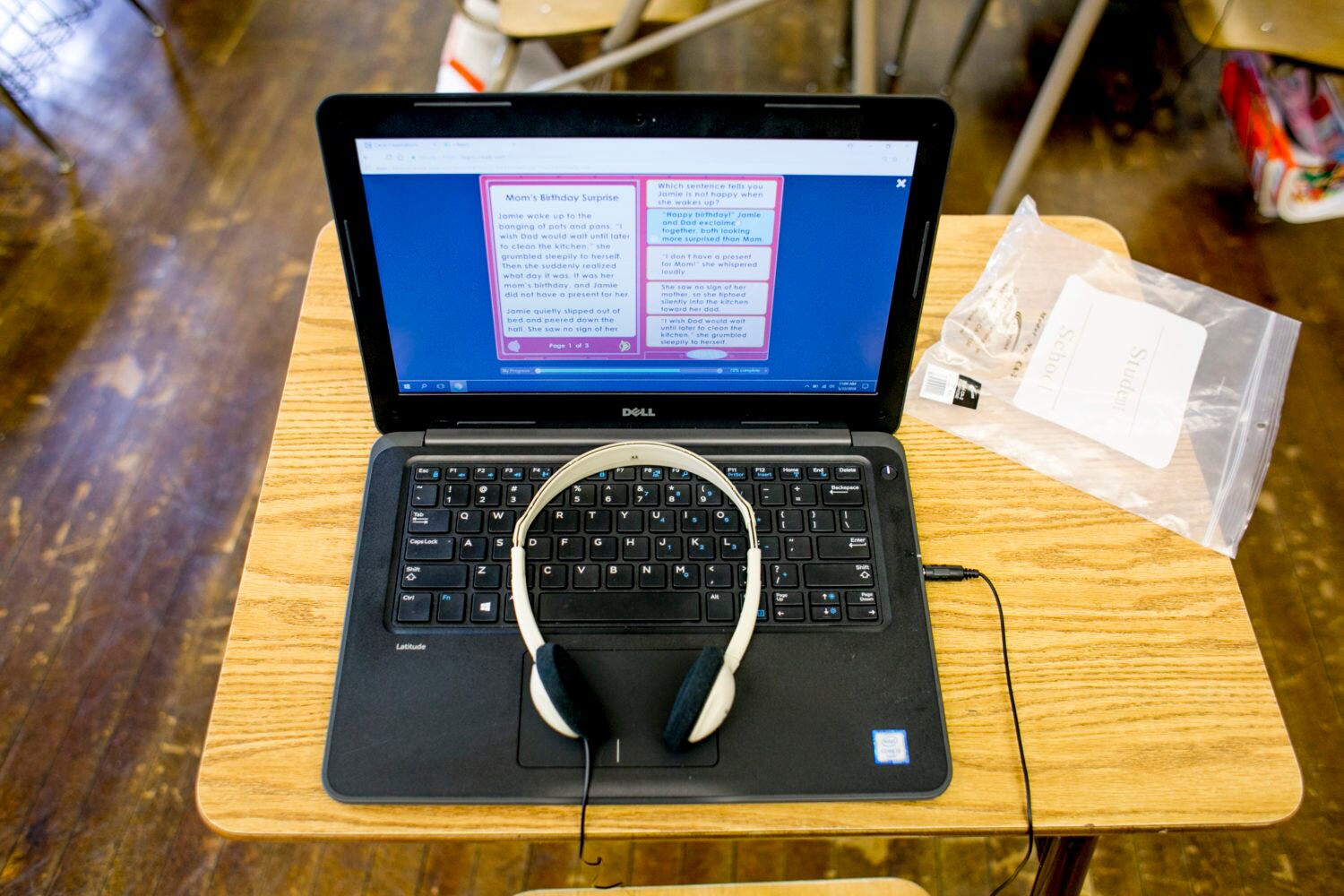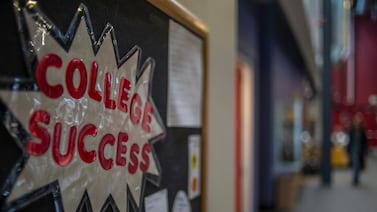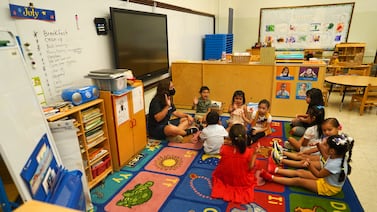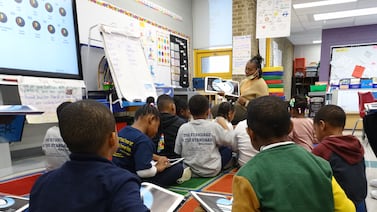Michigan school systems got vastly different amounts of per-student federal coronavirus aid — even when the districts serve roughly the same percentage of low-income families. These disparities raise questions about fairness and also about how any future federal aid will be handed out.
The Detroit Public Schools Community District, for example, with 81% of its students eligible for the federal lunch program, received $1,684 per student.
Outside the district, Rutherford Winans Academy, a Detroit charter, received $640 in federal aid per pupil, even though 83% of students qualify for the lunch program, which is linked to family income. Meanwhile, Bangor Public Schools, a rural district in western Michigan where 80% of students are eligible for the lunch program, received $278 per student.
With Michigan facing a $2.39 billion shortfall in its education budget, schools across the state are bracing for what could be the largest cut in state history. At the same time, they are anticipating increased costs — $1 billion statewide, according to one education group’s estimate — linked to buying masks and providing internet connections for students.
So far, $350 million in coronavirus aid funds is being distributed to Michigan school districts using the same notoriously complex formula as a longstanding federal program that is supposed to provide extra support to children from low-income families.
The Detroit district was one of a handful of winners, along with city districts like Flint and Benton Harbor whose enrollments have declined in recent decades. While education advocates say there’s little doubt that those districts need the extra help, many are hoping that Congress will choose a different formula next time.
“It’s the wrong formula to use, and we’ve had conversations with our congressional delegation,” said Bob McCann, project director for the School Finance Research Collaborative, a nonpartisan group that advocates for the state to spend more on students from low-income families and those with disabilities.
“Districts with similar needs, one may get significantly more out of this formula,” he said.
The rules that shape the formula have become more complex and confusing since the Title I program was created in 1965. It can be difficult to pin down why some districts get more money per student than similar districts.
“There are many factors that influence a district’s final allocation and these often make a comparison based on a per-student amount appear perplexing, as in the case of Detroit Public Schools Community District,” said Shoua Vang, an analyst for the Michigan Department of Education.
A major reason for the disparities in Michigan is a so-called “hold harmless” rule, which sends additional money to districts that used to have larger populations, Vang said. The gap could also be caused by a rule that allows districts to claim more Title I funds if they have a larger number of students living in poverty, as opposed to a larger percentage of such students.
The five districts in Michigan that received the most federal COVID-19 aid — Detroit, Pontiac, Dearborn, Grand Rapids, and Lansing — are set to receive 33% of the total aid to districts across the state. Detroit alone received 24% of the total. Yet those top five districts enroll 5% of students statewide, and roughly 10% of Michigan students who qualify for the federal lunch program.
“We believe that the CARES Act funding appropriately provides [the Detroit district] with additional federal funding to address unexpected COVID-related costs to support our students, employees, and families,” said Detroit Superintendent Nikolai Vitti. With the infusion of federal aid, the district expects to make few cuts through the pandemic, even accounting for severe anticipated state budget cuts.
Nora Gordon, a professor at Georgetown University who has testified in federal court as an expert on Title I, argues that Congress should use a different formula, one that simply sends more money to districts for each poor student they enroll, if there is another round of federal aid.
Designing such a formula shouldn’t be too difficult, Gordon said: Congress has done it before. Coronavirus relief was sent to governors’ offices using roughly this formula. Another option, used to aid schools during the last economic downturn, about 10 years ago, would send aid to states based on their enrollment and instruct them to distribute the money using their existing school funding formulas.
Mike Addonizio, a professor of education at Wayne State University, said it makes sense that so much of the federal COVID-19 aid went to the Detroit district and others that enroll many students in poverty. Students living in poverty are less likely to have the technologies and other support that they need to effectively learn from home.
“You get the impression that the money is going to the right place,” he said. He added that it’s no surprise that the federal aid package wasn’t perfect: It was designed in a hurry as lawmakers rushed to limit the economic fallout from the pandemic.
“When you’re in an emergency situation like we’re in now, you can’t let the perfect be the enemy of the good,” he said.
But critics have noted that the first round of federal aid wasn’t spread widely enough. As the number of new coronavirus cases in Michigan declines, officials are signaling that a return to in-person instruction in the fall is becoming more likely. That means all schools across the state — even those that received much less federal aid — will be forced to spend money on masks, hand sanitizer, thermometers, and online connections for students learning from home.
As education experts predict a sharp learning loss due to the coronavirus, it’s especially important to make sure no students miss out on federal aid, said Jack Elsey, director of the Detroit Children’s Fund, a nonprofit that supports several charter schools in the city as well as the main district.
“I want to know, just like any Michigan parent would want to know, whether children are getting what they deserve,” he said. “I’d be pretty upset if I learned that the child down the street was getting more money because somebody who lives hundreds of miles away couldn’t come up with a formula that was more exact and more equitable.”
Wanda Cook-Robinson, the top schools official in Oakland County, which borders Detroit, told the Detroit Free Press last week that she is hoping the next round of federal aid will be distributed differently.
Charter school advocates, who have long criticized the Title I formula as favoring larger traditional districts are also pushing for a change. Across the state, charter schools received more per pupil than traditional districts because they enroll a higher proportion of students from low-income families. But in cities like Detroit and Pontiac, charter schools received much less per student than the city districts.
“We’ve certainly raised it with the department of education,” said Dan Quisenberry, president of the Michigan Association of Public Schools Academies, of the first COVID-19 relief program. “It’s like, wait a second, how did that happen?”







